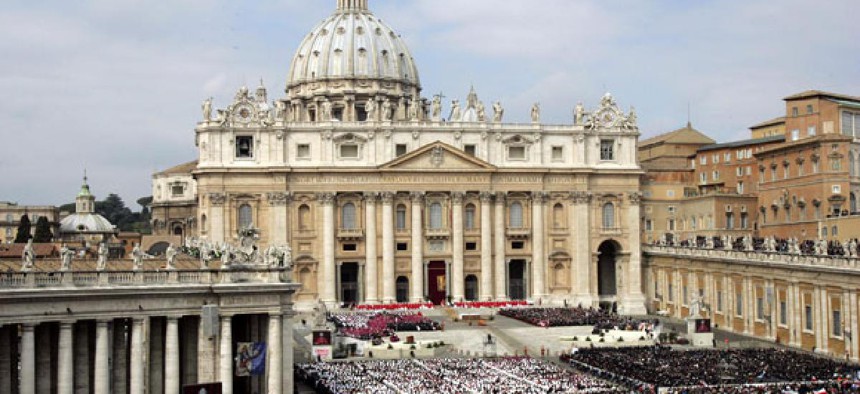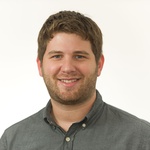Obama Still to Name U.S. Ambassador to the Vatican
How that appointment could come to define the U.S.-papal relationship.
The Obama administration and the Vatican haven’t enjoyed the smoothest relationship over the past four years. In the wake of the Affordable Care Act, more than 40 Catholic organizations brought lawsuits against the administration, in opposition to the law’s mandate that Catholic hospitals and charities have to comply with its perspective on birth control.
But the president has a symbolic gesture coming up that could patch up or further unnerve the U.S.-Vatican relationship. He has to appoint an ambassador to the Holy See, a position that has been left unfilled since the election. This appointment, as the National Catholic Register explains, is “a test for the kind of relations the administration wishes to have with the Catholic Church in President Obama’s second term.” And that test has no easy answer for an administration that supports abortion rights and contraception.
“This is a particularly awkward position for the Obama administration to fill,” says Maureen Ferguson, a senior policy analyst with the Catholic Association, an advocacy group. It would seem “quite undiplomatic,” she says, to send an ambassador whose views are offensive to the Vatican.
But the job isn’t to act as a political prop; it is to be the United States' representative working with the Vatican on foreign policy initiatives.
Obama’s former ambassador to the Vatican, Miguel H. Díaz, describes the job as a tough balancing act. On the one hand the job requires speaking for the president, but on the other it means understanding where the church is coming from. “There’s never going to be an ambassador, even to the Holy See, where there is going to be 100 percent agreement,” Díaz says, speaking of the relationship between the U.S. and the Vatican. “Was there a strain? Yes, but not with respect to foreign policy."
In 2009, Obama encountered some blowback floating names for the position. Reportedly, the Vatican “balked” at his suggestions, which included Caroline Kennedy. Catholic groups thought a Kennedy appointment would constitute a "a calculated insult to the Holy See" because of her position on abortion.
“The Holy See has always set a very simple standard: the person should not be in opposition to fundamental teachings of the church that belong to our common shared humanity,” a State Department official told the Catholic News Agency at the time.
Díaz left the post in November to become an academic at the University of Dayton. But even he, a theologian, met some criticism when he was appointed. He and 25 other Catholic leaders signed a document calling Health and Human Services Secretary Kathleen Sebelius, who favors abortion rights, “a woman of deep faith.”
But Díaz says focusing on the optics of it all misses the point of the ambassadorship. “For many people in the United States, they don’t really understand that role,” he says.
The ambassador is not in Rome to dispute U.S. domestic policy with the church; the church, through its various arms, will engage with the administration directly on those matters. The ambassador is there to work with the church on various global initiatives—such as dialogs between leaders in the Middle East, climate-change initiatives, and foreign aid. While the two sides don’t see eye-to-eye on everything, they do engage in a respectful diplomatic dance. One example, Díaz says, was working with the church to support AIDS-prevention initiatives in Africa.
“We all know that the Holy See’s perspective on contraception and the prevention of AIDS—especially with respect to condoms—would not be in agreement with U.S. government policy, which has been consistent whether Republican or Democratic,” he says. “What I did was to think creatively, what we did was to focus on the prevention of HIV-AIDS from mother to child.”
The Vatican also serves as a good forum to engage countries the U.S. doesn’t have formal diplomatic relations with, such as Cuba.
“You have to remember we are a friend, right, we are a friend to the Holy See,” Díaz says. “The Holy See has relations with, for instance, Iran, with Cuba, which we don't even have diplomatic relations with. What I'm trying to say there is the art of diplomacy that the Holy See totally understands.”
NEXT STORY: Did Harvard Just Make It OK to Spy on Employees?




